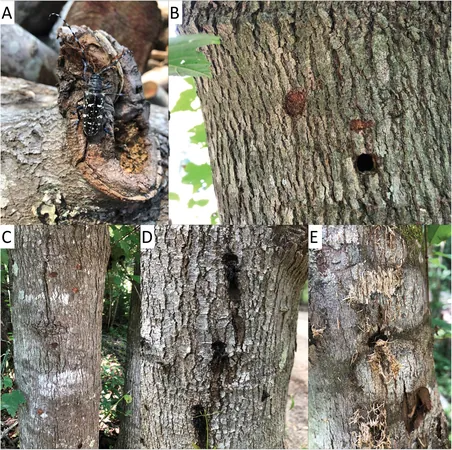
Why Your Next Bug Snap Could Save Our Ecosystem: Entomologists Urge Public Participation!
2024-11-18
Author: Nur
Why Your Next Bug Snap Could Save Our Ecosystem: Entomologists Urge Public Participation!
The next time you stumble upon a captivating insect in your garden or on your nature walk, don’t just admire it—snap a photo with your smartphone and share it online! This simple act could help identify invasive species that might be encroaching upon your local environment.
Entomologists are rallying the public to take an active role in monitoring and reporting insect sightings. In a recent article published in the journal Environmental Entomology, researchers emphasized the significance of community participation in early detection of harmful species that could disrupt local ecosystems. Platforms like iNaturalist and Observation.org empower individuals to document their observations, regardless of their expertise. By harnessing the collective eyes of nature enthusiasts, scientists can gather invaluable insights into the distribution of insects and other organisms.
A collaborative approach is critical. The authors—Amanda D. Roe, Ph.D., from the Canadian Forest Service, Leigh F. Greenwood from The Nature Conservancy, and David R. Coyle, Ph.D., from Clemson University—advocate that "catching invasives with curiosity" will increase the raw number of observations and ultimately enhance the chances of spotting invasive species before they establish dominance.
Interestingly, many significant invasive species were first identified by concerned citizens. For example, the notorious Asian longhorned beetle was discovered in Brooklyn in 1996 by a local resident who noticed unusual damage to maple trees. This single observation set off a chain of events leading to ongoing infestations across North America, highlighting the power of public engagement in pest management efforts.
In addition to the Asian longhorned beetle, the involvement of the public has been crucial in identifying other invasive pests, such as the spotted lanternfly and the emerald ash borer. When experts and amateurs work in tandem, the data collected can broaden the surveillance net necessary for efficient biosecurity measures.
To bolster these efforts, entomologists are developing informal methods to track public biodiversity observations through existing apps. They strongly encourage scientists and government agencies to invest in structured systems for alerts and data analysis, ensuring they're using public data ethically and responsibly.
The stakes are high: the sooner a new invasive species is detected, the higher the chances of controlling or eradicating it, thereby safeguarding ecosystems, economies, and public health. This collaborative push isn’t just for entomologists; it’s a call to action for everyone who enjoys connecting with nature.
For those interested in participating, iNaturalist continues to be the leading platform for biodiversity observations in North America. Alternatives like Observation.org are popular in Europe, while BugGuide.net offers a focused approach for identifying insects and arthropods specifically. Numerous universities in the U.S. also provide resources for insect identification, making it easier than ever for the public to contribute.
So grab your smartphone, embrace your inner naturalist, and join the fight against invasive species—your bug photo could be the one that changes everything!





 Brasil (PT)
Brasil (PT)
 Canada (EN)
Canada (EN)
 Chile (ES)
Chile (ES)
 España (ES)
España (ES)
 France (FR)
France (FR)
 Hong Kong (EN)
Hong Kong (EN)
 Italia (IT)
Italia (IT)
 日本 (JA)
日本 (JA)
 Magyarország (HU)
Magyarország (HU)
 Norge (NO)
Norge (NO)
 Polska (PL)
Polska (PL)
 Schweiz (DE)
Schweiz (DE)
 Singapore (EN)
Singapore (EN)
 Sverige (SV)
Sverige (SV)
 Suomi (FI)
Suomi (FI)
 Türkiye (TR)
Türkiye (TR)